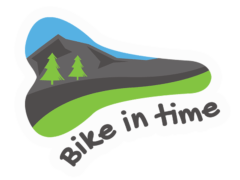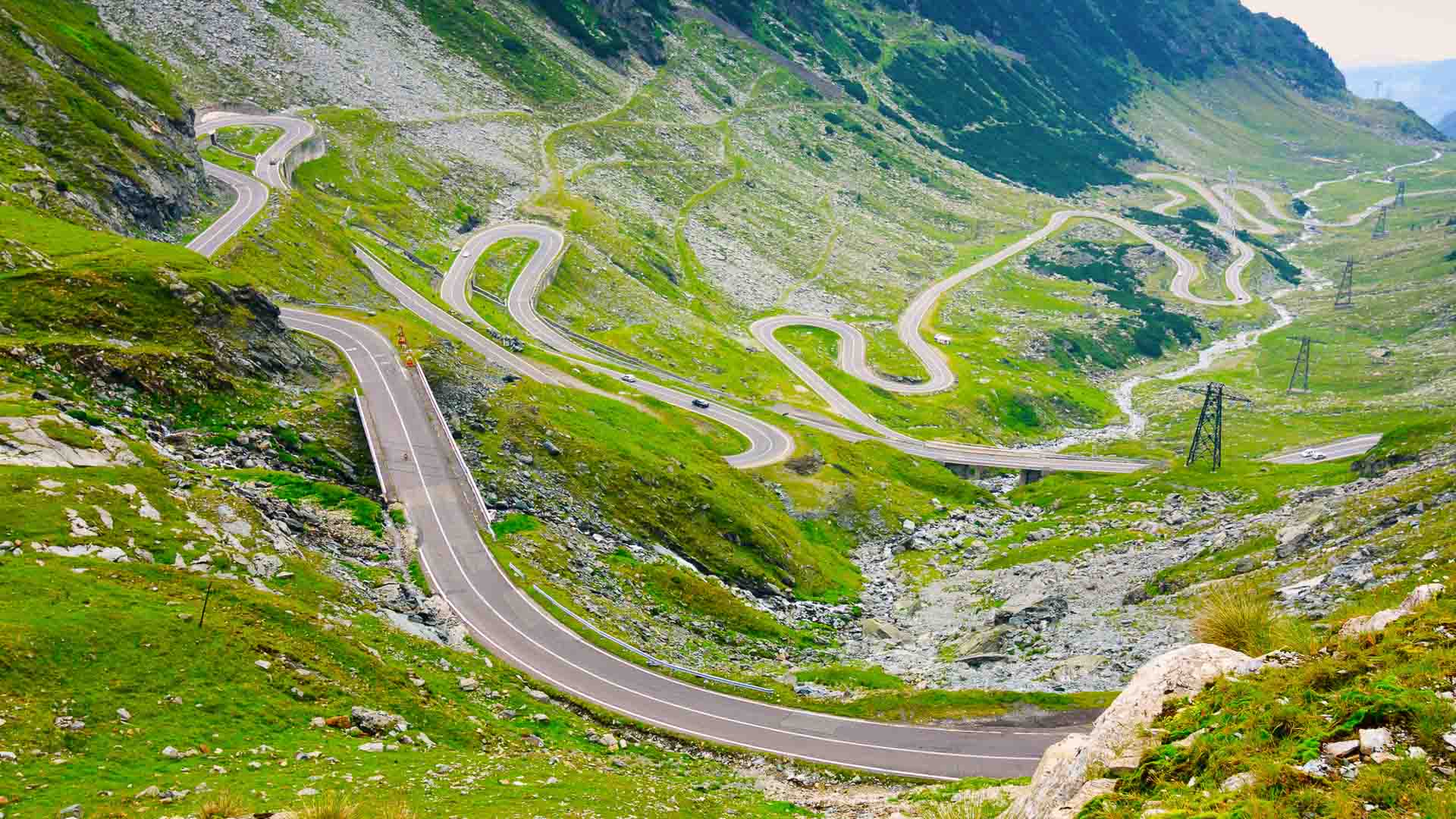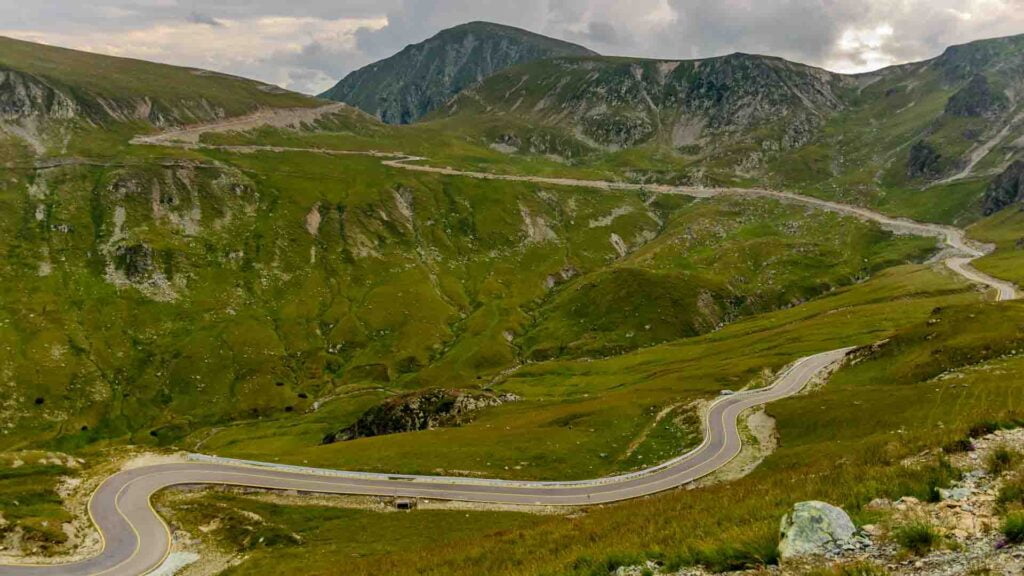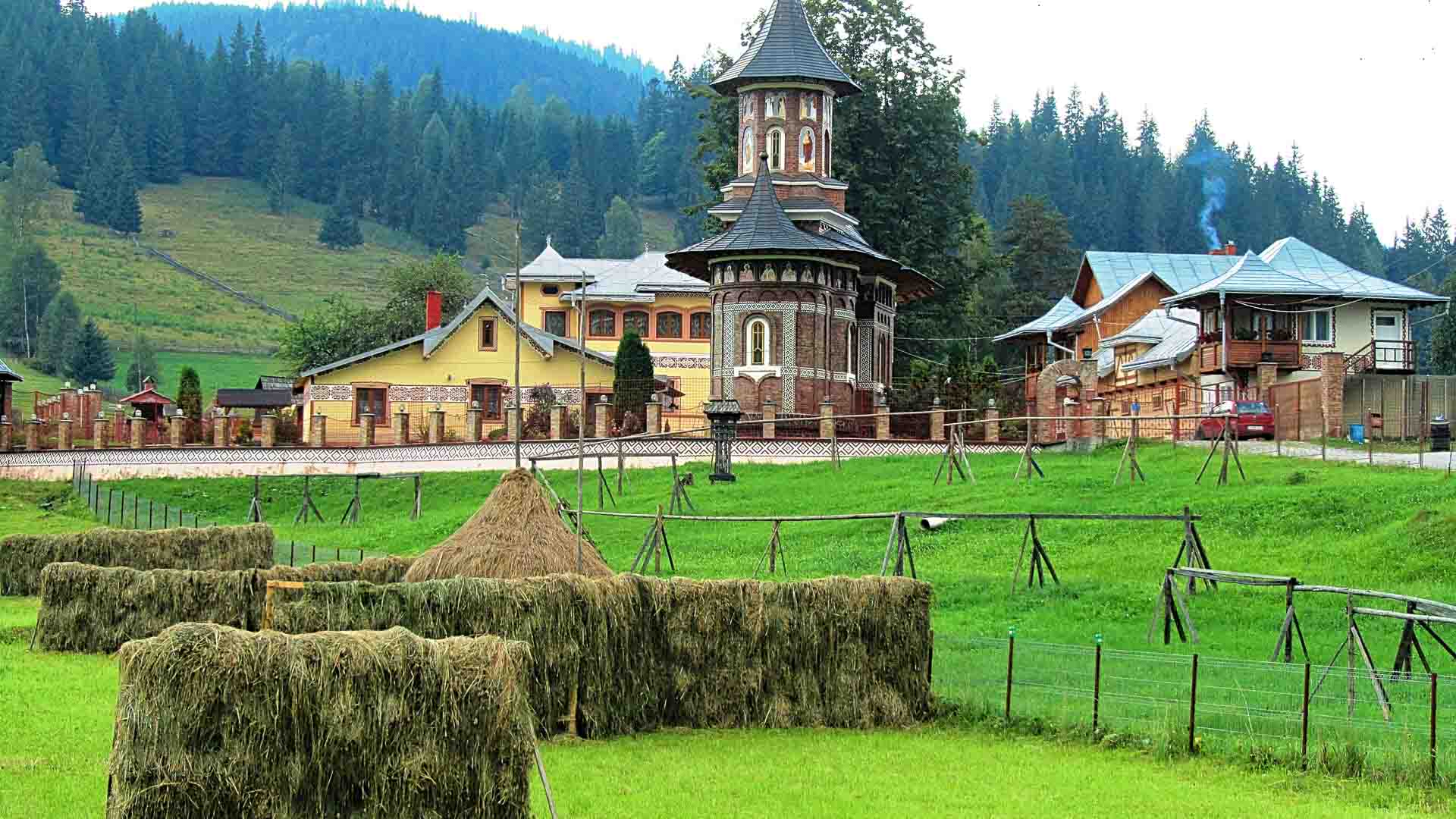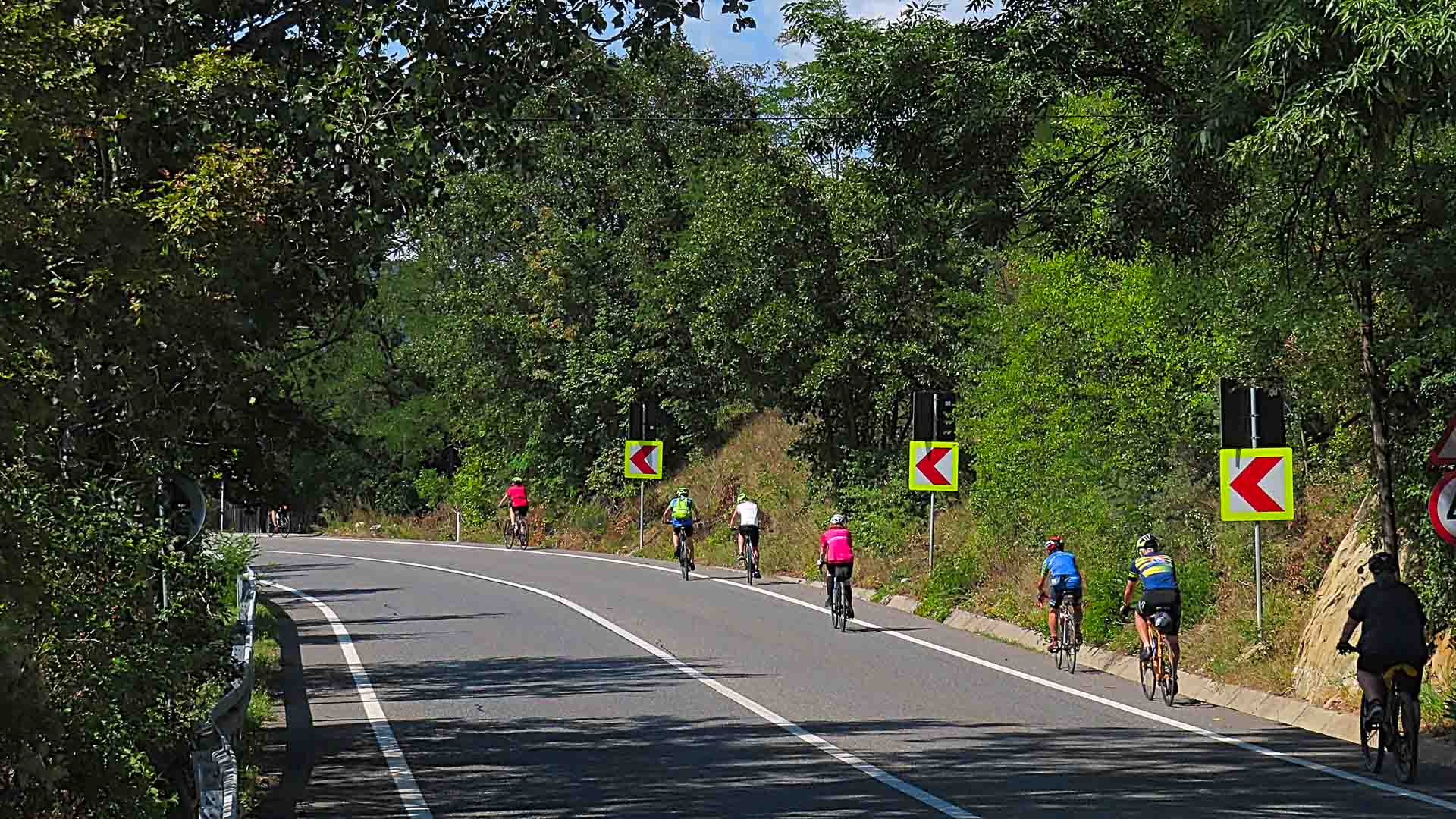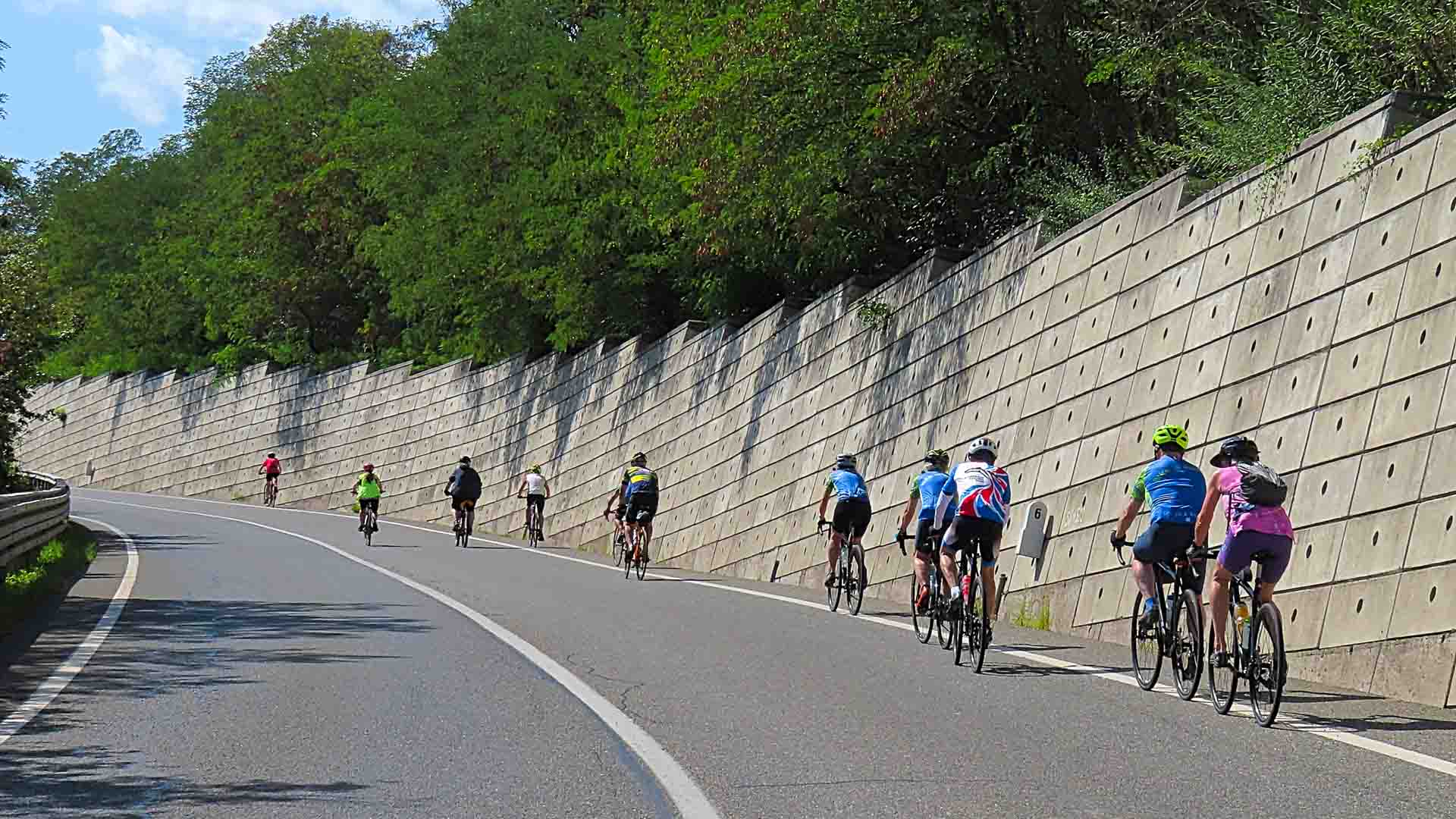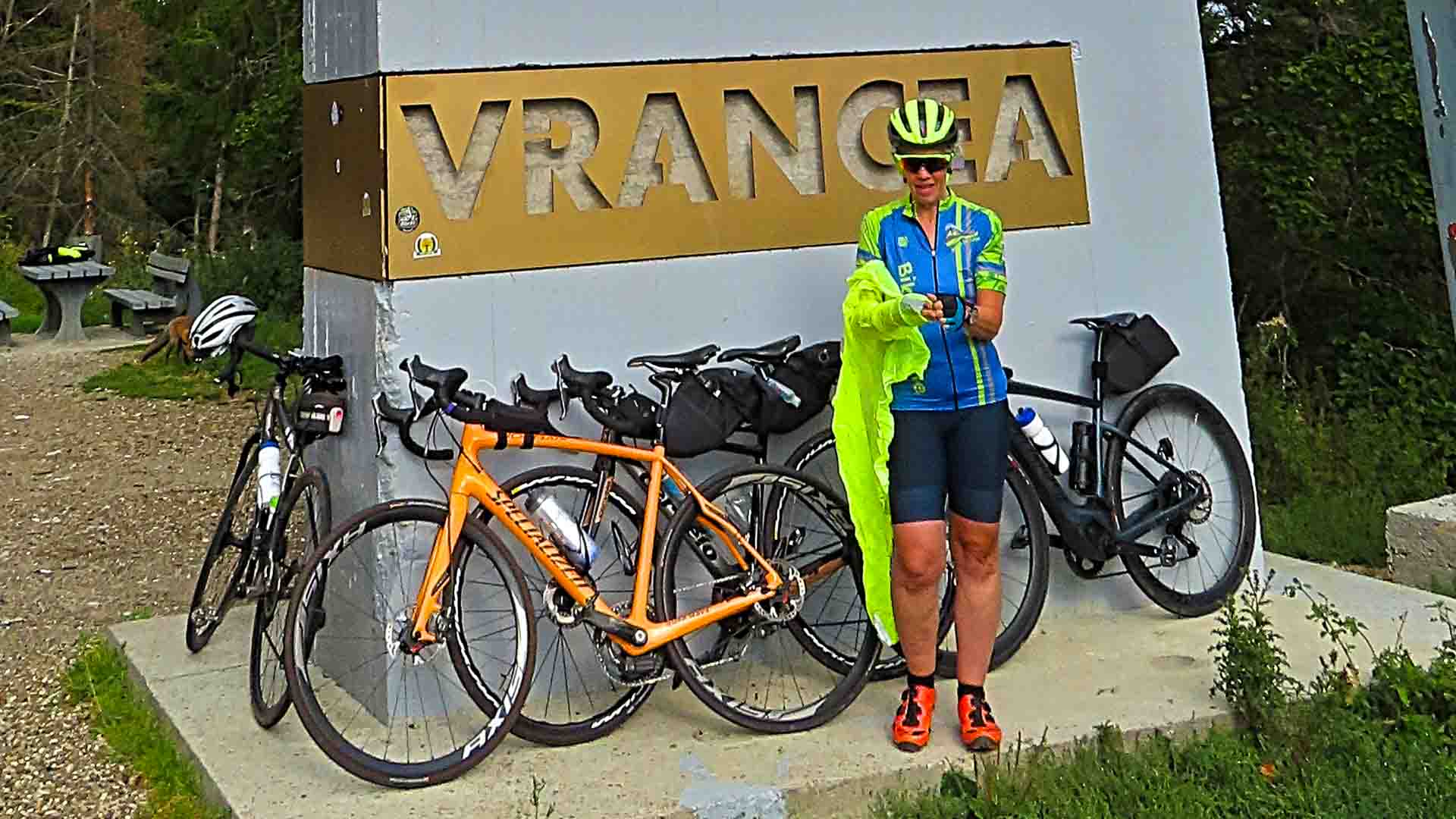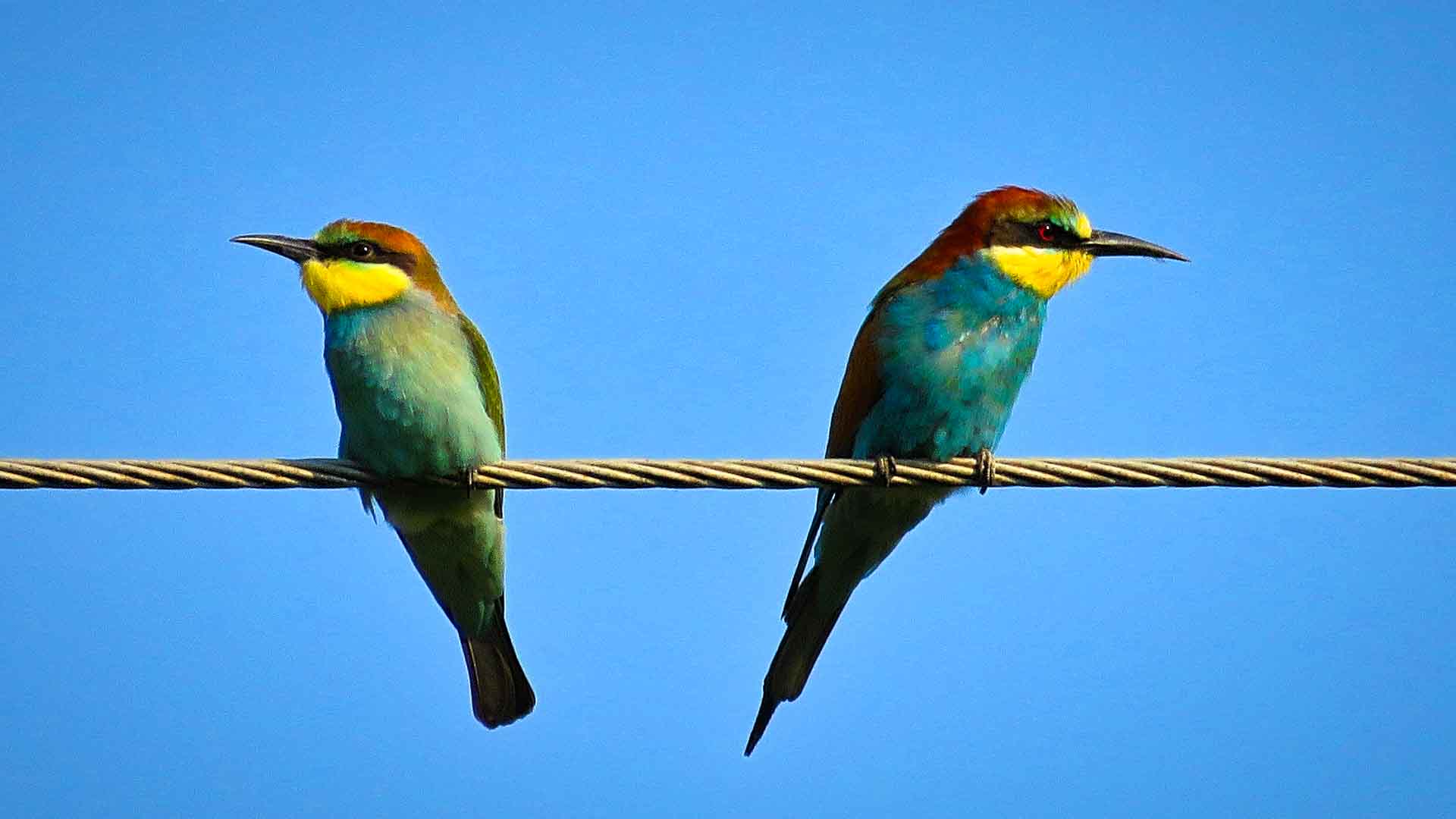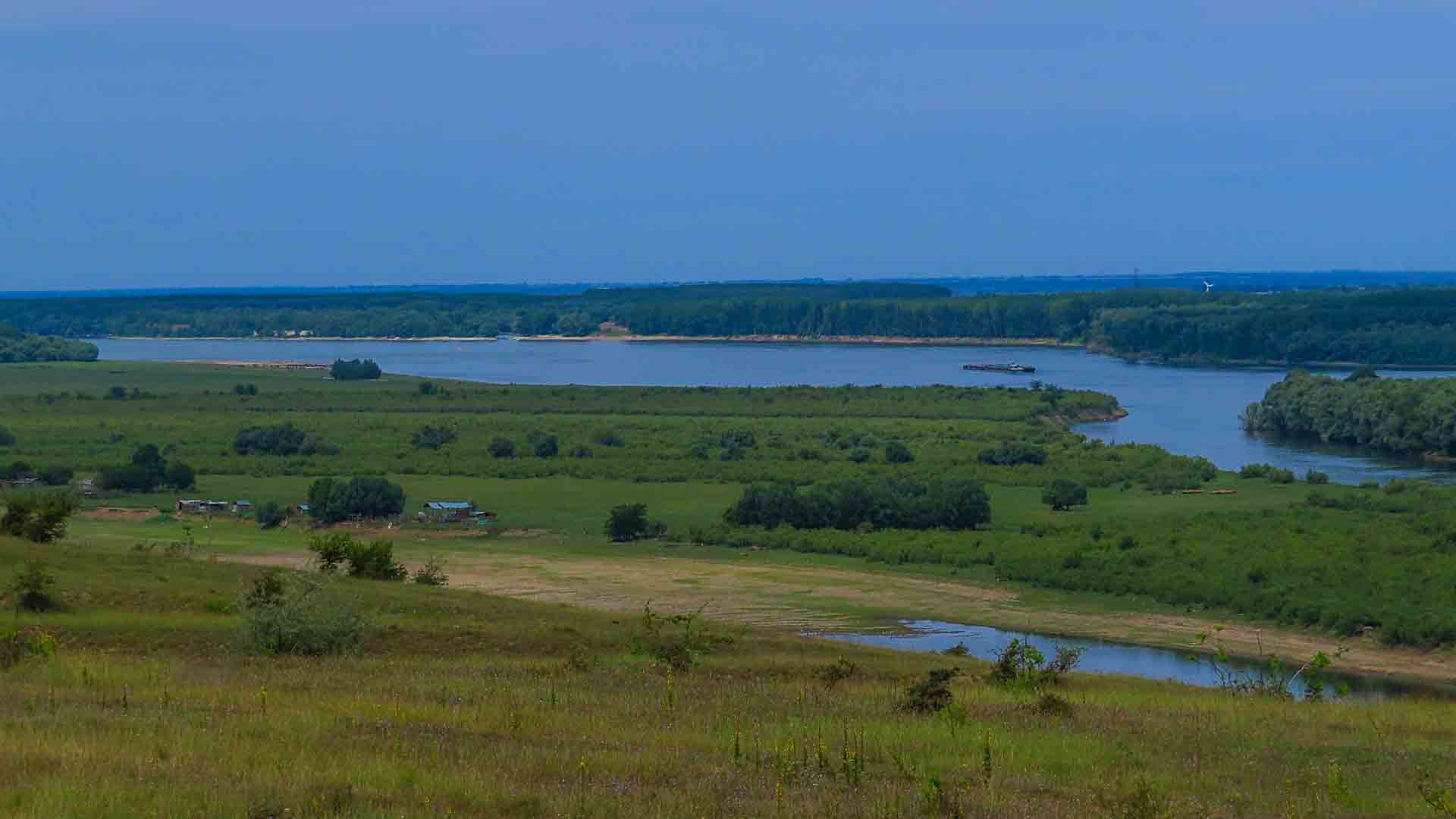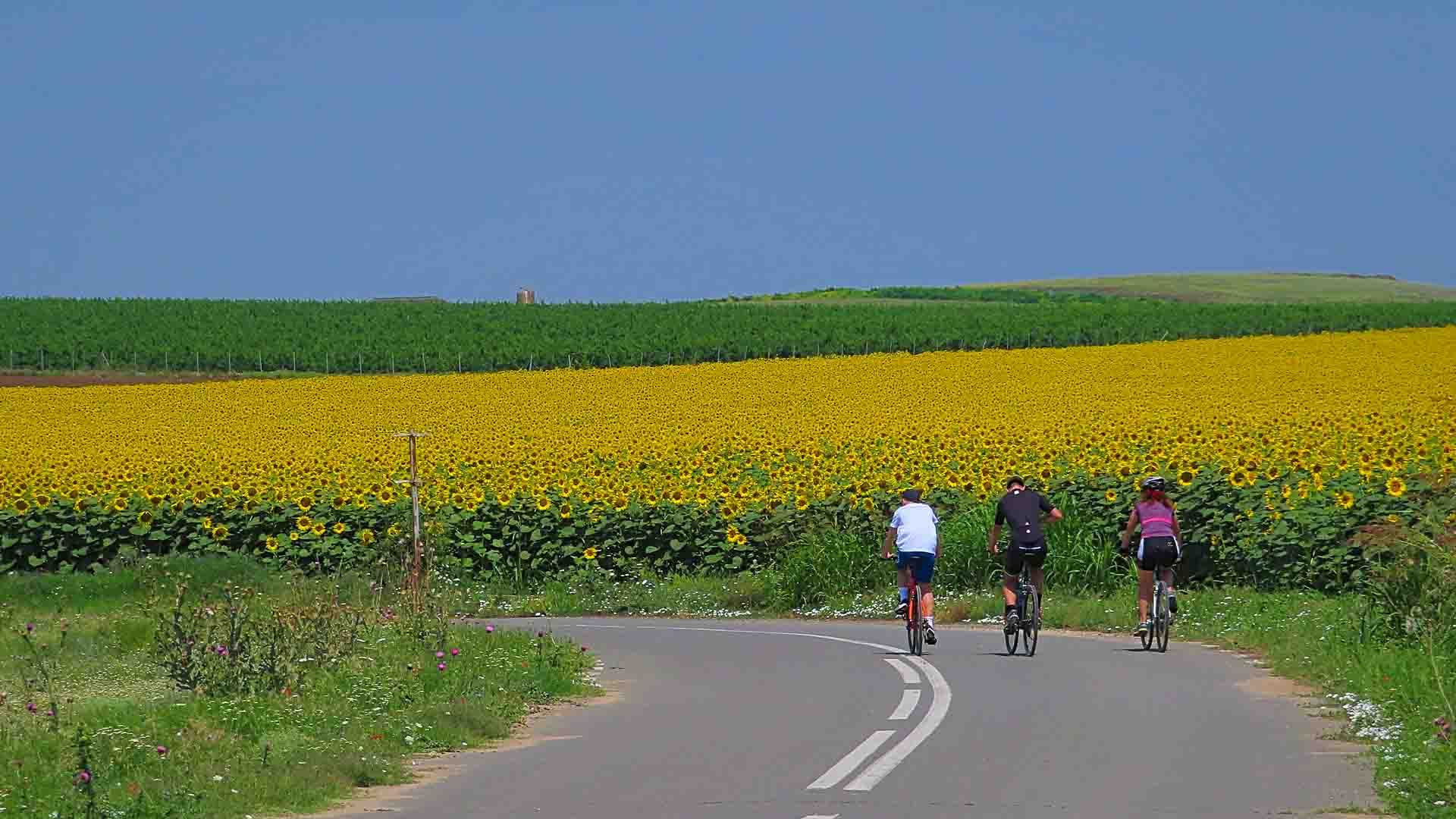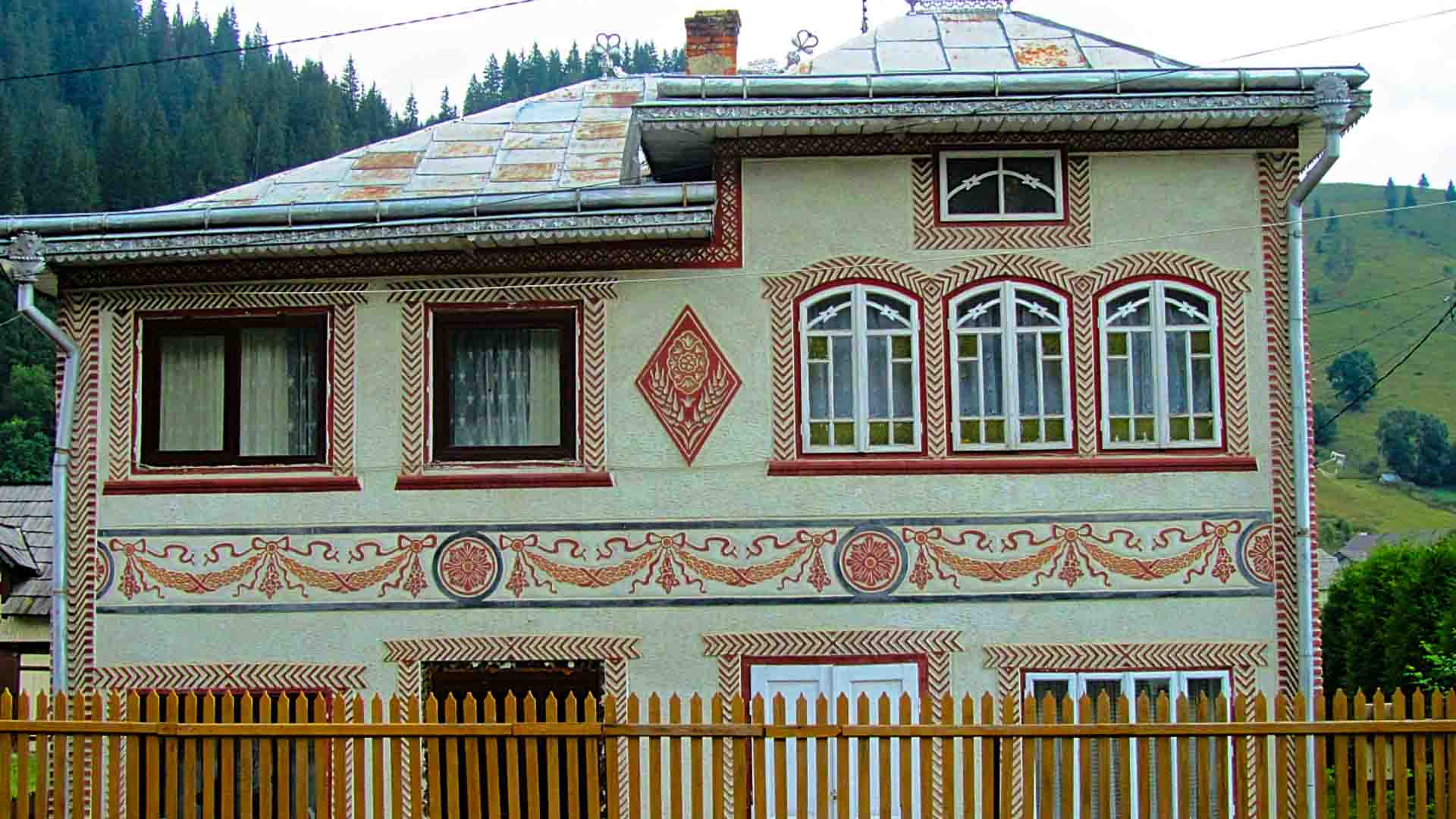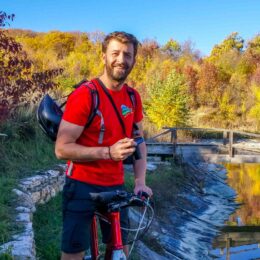When it comes to cycling, Romania is still not that well known amongst cyclists looking for European cycling holidays.
Which is surprising when you come to think of it, given Romania will hold four UCI calendar events in 2024 and has incredible mountains (much more on the famous Transfagarasan and Transalpina below), culture and history.
When Epic Road Rides reader and passionate Romanian cyclist, Costin Davidescu, got in touch back in 2020, we jumped at the chance for him to tell us about his experience of cycling in Romania.
Roll on a few years and we’ve been delighted to update this guide with the expert help of Ionut Maftei. Ionut is from Bucharest in Romania and set up Bike in Time in 2019 to help cyclists discover Romania by bike. Today he runs road, gravel and leisure trips all over Romania.
So, if you’ve ever fancied venturing beyond the confines of western Europe and the climbs made famous by the Grand Tours, this guide will make interesting reading. Read on!
Why should cyclists visit Romania?
Cycling in Romania is amazing. It’s a fascinating country and many people say that visiting Romania’s countryside is as close as you will ever get to life in the Middle Ages (but with nicer hotels!). Even King Charles is a fan (he owns a guesthouse in Viscri).
Romania is a country of dramatic mountains, magnificent castles, baroque manor houses, terracotta tiled roofscapes, medieval towns, fortified churches, unfenced countryside and meadows of wildflowers. If you’re into ornithology, biodiversity or anything to do with the natural world to be honest, you’ll be in heaven.
One of the big advantages of a cycling holiday in Romania is that it is a European country but it is still inexpensive compared to most countries in Europe. The people will give you a warm welcome and most of them speak English.
In the last few years, the infrastructure in Romania has started to improve so some incredible road rides have begun to appear on the map – for example the Transfagarasan Highway (made famous by Jeremy Clarkson/Top Gear) and the TransAlpina Road.
These two roads are probably Romania’s most famous cycling climbs, but they are just the tip of the iceberg when it comes to cycle holidays in Romania.
What are the best cycling routes in Romania?
There are two very famous roads in Romania for cyclists, the Transfagarasan and Transalpina. These two awesome roads are the starting point for many people researching a cycling trip to Romania.
Below we discuss the Transfagarasan and Transalpina, as well as less famous but still very beautiful and demanding routes.
Carpathian Mountains climbs and routes
Transfagarasn and Transalpina
The Transfagarasn and Transalpina both cross the Carpathian Mountains and link two historical regions of Romania, Transylvania and Valachia. Fortunately, they’re also located quite close to each other, which makes conquering these two giants feasible in one trip.
Click through to the guides below to read more.
Valcan Pass
GPX DownloadTerms of use reminder
Ionut says “While the Transfagarasan is considered the most scenic climb in Romania, and the Transalpina is the highest, the Valcan Pass is considered the most difficult.
Not far from Transalpina, the Valcan Pass also crosses the Carpathians, connecting the town of Vulcan in Transylvania to Targu-Jiu in Valachia. Currently only the north side of the Valcan Pass is paved, but the plan is to pave the entire route. The following describes the whole route, despite the fact that the southern part is currently only suitable for gravel bikes due to the dirt roads.
For cyclists, the interesting part is from Vulcan to the village of Sambotin, which avoids the high traffic section from Sambotin to Targu-Jiu. The road is most beautiful for the first 11km, where the average gradient is 9.2%!
After the summit, the descent is not paved for the first 16 km. Once you reach the village of Schela, the route is paved to the end.
Where to stay
The start/end points of the route are not tourist destinations, so there aren’t many options for accommodation and for meals. On the north side, you could stay in in Petrosani or Vulcan, but there are not too many options. On the south side, Targu-Jiu is the main city.
For more cycling friendly accommodations in Romania, you can also see a platform dedicated to „welcome cyclists” certification sites: www.velopopas.ro.
How Bike in Time can help
Read more about planning a Romania cycling holiday – or for a customised tour including this pass, get in touch.
Prislop Pass
GPX DownloadTerms of use reminder
This route connects two iconic regions of Romania: Maramures and Bucovina. The route includes Ciocanesti, which is often called “the most beautiful village of Romania”.
The starting point is Borsa, a winter resort in Maramures. Maramures has a lot to offer, mainly for cultural and outdoor trips. The village of Viseu has a narrow railway steam train which can take you in the middle of the woods, in a „back in time” trip. In Borsa you can have hiking trips in the mountains.
Once you’ve left Borsa, the climb to the top is 23 kilometres long, and on the way you have more options to stop for breaks. On top you have a nice view both over Maramures and Bucovina. It’s also home to Prislop Monastery, which is worth a short visit. The route was recently renovated and improved, so the asphalt is quite good on most of the route.
The downhill is steep to start with (around 6-7 kilometres), while the rest is a relaxing descent through the forest, on the border of Maramures and Bucovina. The route ends in the village of Ciocanesti, which was awarded “the most beautiful village in Romania” for its decorated houses and for maintaining traditions, such as egg painting (there is a museum of painted eggs in the village).
Where to stay?
The starting point of the route is Borsa, a winter resort which offers lot of options for accommodation. On the way you can find a few inns and small hotels, and on top of the route there is a monastery and a few restaurants. We also like the town of Viseu, although its 20 kilometres from the start point of the climb.
The ending point is the beautiful village of Ciocanesti, where you can find one of the beautiful traditional guesthouses for accommodation and for meals. Also close by is Vatra Dornei.
The main town in Maramures is Baia Mare, and in Bucovina the main town is Suceava.
For more cycling friendly accommodations in Romania, you can also see a platform dedicated to „welcome cyclists” certification sites: www.velopopas.ro.
How Bike in Time can help
We’d love to share our tour of Bucovina, which includes the Prislop Pass.
Lepsa Pass
GPX DownloadTerms of use reminder
I love this 85 kilometre crossing from Vidra in Moldova to Targu-Secuiesc in Transylvania. It’s a beautiful, scenic road which connects the town of Focsani to Targu-Secuiesc. The interesting section for cycling starts from the village of Vidra. The first 20 kilometres is rolling hills, along Putna River, passing small, traditional villages. Then, the road starts to climb, up to 1,162m altitude. The descent is steep, but the asphalt is good enough for enjoying the ride. The last part of the route is almost flat, with a beautiful entrance in the Szekely Region of Transylvania.
Interesting points to note for the start/end of your trip:
- The starting point for the route is on the Moldavian side, close to the wineries area, and you can combine cycling with wine tasting in Odobesti, Jaristea, or Panciu.
- Targu-Secuiesc is one of the authentic Szecklar towns, with a Hungarian majority population. The traditional architecture and a few museums are available here.
Where to stay?
On the Moldavian side, the accommodation is mainly in the villages of Tulnici and Lepsa. Alternatively, Focsani is the main city in the region.
Targu-Secuiesc is a pleasant city where you can find enough accommodation options, with good quality services.
For more cycling friendly accommodations in Romania, you can also see a platform dedicated to „welcome cyclists” certification sites: www.velopopas.ro.
How Bike in Time can help
This route is contained within our Mineral Water route.
Cycling along the Danube to the Black Sea
GPX DownloadTerms of use reminder
If you want something a little different, with little climbing but lots of views, the Danube Route from Calarasi to the Black Sea is an attractive route.
The EuroVelo 6 is one choice, but I love our more direct route. Whereas the official EuroVelo 6 route follows the Danube River, including the Danube Delta, our alternative route to EuroVelo 6, is a lovely, quiet choice. The route has excellent surfaces and you can experience the wilderness of the Danube region, the “back in time” feeling of rural villages, and the beautiful landscapes of Dobrogea region. The villages are poor, but authentic, so you get a real sense of history. You’ll find carts pulled by donkeys, kids swimming in the river, sheep and goat herds crossing the villages, and agriculture done by hand.
The wildlife is very diverse, and it is all around. From turtles crossing the route to various coloured birds – you have a lot of opportunities for taking photos and to admire.
For the beauty of the experience, our route also includes the Danube crossing by ferry, after starting in Calarasi. You’re also riding very close to the Bulgarian border, so you can do a short trip into Bulgaria, if you have the time
Once you are on the southern part of the Danube, you’ll find quiet roads where traffic is minimal, and you have the time to enjoy the landscape on good, paved road. Despite the highest altitude being just 200m, along the 150+ km route you will have a total climb of +1,200m, which means lot of short, but steep climbs between the villages. Don’t expect a flat and boring landscape, crossing an endless plain; there are canyons, riverbanks, small forests, and vineyards on the route.
The trip ends on the southern side of the Black Sea shore. From here, you can easily reach other Black Sea resorts such as Constanta.
Where to stay
Calarasi is a big city; you can choose between various hotels in the city or in the surrounding area.
If you want to spend the night on the way, we suggest the village of Adamclisi, very close to the proposed route. You can find here an old Roman castrum, as well as a renovated museum dedicated to the Roman emperor Traian. If you want to nip over to Bulgaria, you can also find in the villages near the Danube (Ostrov or Silistra, on the Bulgarian side).
The finish point is the city of Mangalia, where you can find a lot of options for accommodation, including in the low season.
For more cycling friendly options, you can use the new dedicated platform for the “welcome cyclists” certified sites in Romania: www.velopopas.ro.
How Bike in Time can help
We would love to support you on this route: read more about planning a Romania cycling holiday – or ask us about this route here.
Cycling in/around Bucharest
The city
Bucharest is the capital of Romania. The history of Bucharest started with famous Vlad the Impaler (yes, you don’t have to travel to Transylvania if you are searching for vampires!). It then became an important city during the 19th century, when it was nicknamed “little Paris” due the architecture and the lifestyle, before being transformed again by Communism after the WWII. Still, today you can find great buildings, large green areas, and modern infrastructure, which make it suitable for living and for spending part of your Romanian holiday.
It’s a flat region, which makes it very suitable for cycling. While the cycling infrastructure is improving, it’s still not overly cycling friendly – unless you know what you’re doing of course!
Our dedicated cycling tour of Bucharest uses suitable cycling lanes to visit the main sites of the city centre in about 4 hours, including the historical sites, a few parks, and the old historical town. If you want to explore the wildlife, there is a natural protected reserve right in the city, which is unique in Europe: Vacaresti Natural Park, “the Delta of Bucharest”.
Dealu Mare
As Bucharest is in the middle of a huge plain, there are not too many options for cyclists that love to climb. However, if you drive about one hour to the north, you can find a proper area for climbing. “Dealu Mare” (The Big Hill) is a 70km region along the 45 degrees latitude, with a maximum 600m altitude. It’s also perfect for vineyards.
Many people compare this area with Burgundy in France or Tuscany in Italy. The slopes are very similar. There are about 40 wineries in the area, and the wine tourism is growing here. Various road and off-road cycling races are organised in the region, and some of the slopes get up to 30% gradients!
Our favourite climbs are those reaching the edge of the hill, so you can have a nice view both toward Bucharest, but also to the Carpathians. Here is one of them, about 10 km long, leaving from a winery and finishing at a small church on top of the hill, with a nice view.
The RWGPS route is here.
Our guided cycling tour of the winery area includes this climb.
Sultan climb
One of the hidden gems that I love to ride is also one of the steepest roads in Romania! The climb is called Sultanu (the Sultan) and although it’s short, it averages 17%. At the top it’s even steeper! This is the Strava segment here.
It’s a very short climb, similar to the Flemish “walls”, but it can also be incorporated into longer tours. The climb is about two hours north from Bucharest.
The RWGPS route is here.
A longer route, which include the Sultan climb, is a 55km loop from the city of Pucioasa, with more climbs and beautiful views. The RWGPS route is here.
Alba Iulia
In the centre of the country, starting from the beautiful city of Alba Iulia, you can experience another great climbing, which we like for the dedicated cycling path. The “Mammut Hill” is a climb starting from the city of Alba Iulia (250m altitude) and reaches the altitude of 750m after 6 km. The route can be done as a loop, and there is also an option for gravel/MTB.
The climb is quite constant, with an average grade of 8%.
The RWGPS route is here.”
Where to stay (for cyclists)
Romania is still a cheap place for accommodation, meals, and transport. The conditions for cycling tourism are improving, but not all accommodation is yet ready to receive visitors with bicycles. It’s best to check in advance whether the accommodation you are looking at is cycling friendly.
Ionut says “A new initiative – a “Welcome Cyclists” certification – was initiated and the platform will be populated with cycling friendly accommodations, restaurants, and touristic sites. You can check the platform at velopopas.ro.
We’ve set out suggestions for where to stay next to the routes mentioned above and summarised the places to stay that work well for the most famous climbs, below.
Transfagarasan
Curtea de Arges
Curtea de Arges is the main city on the southern part of the route is Curtea de Arges. It is one of the most visited cities in Romania, as the former royal family members of Romania are buried here. The main attraction is the Monastery Curtea de Arges, one of the most beautiful architectural churches in Romania. The city has more options for staying, and some of them are cycling friendly. You can follow velopopas.ro website to find out which one are cycling friendly.
Arefu
Arefu is the last village before starting the climb on Transfagarasan. You can find about 30 guesthouses, glamping, camping, and other types of accommodation in this village.
Vidraru Dam and Balea Lake
Both are on the climb. Vidraru Dam is a touristy area with a few hotels. Balea Lake is the popular name of the top of Transfagarasan. You can find three hotels and restaurants, in case you decide to spend more time here.
Cartisoara
Cartisoara is a village on the north side of Transfagarasan. It’s usually the starting point if you want to climb from the north. There are about 25 guesthouses within the village, but you can find even more in the nearby area, which is becoming more touristy.
Sibiu
Sibiu is 40 km from Transfagarasan, but it’s a good point if you want a transition stop from Transfagarasan to Transalpina. Sibiu is the former European Cultural City (2007), so you can spend at least one day here for visiting their cultural attractions.
Transalpina
Sibiu
Sibiu is mentioned above for Transfagarasan; it is at the same distance from Transalpina (approximately 40km).
Saliste
Saliste is the village where officially Transalpina starts. It is also a good place to find suitable accommodation for cyclists. Some similar villages are Sibile, Tilisca, Rod, or Poiana Sibiului
Vidra Lake
Vidra Lake is the top area of Transalpina, where you can find about five hotels and a few restaurants.
Ranca
This is a ski resort on the Transalpina, with lot of options for accommodation, but we find it crowded.
Novaci
Novaci is the starting point of Transalpina on the southern part of the climb. The village developed as a touristy destination, so you can find accommodation here. Some of them are also cycling friendly, and they are mentioned on the velopopas.ro platform for cycling friendly points.
Targu-Jiu
Targu-Jiu is the main city close to Transalpina. It’s approximately 45km from the starting point.
Horezu
Horezu is another important tourist destination close to Transalpina. Horezu is an UNESCO World Heritage Site, 30km from the starting point of Transalpina, where you can find suitable accommodation and you can use it as a starting point.
Prislop Pass
Borsa and Viseu
These are the two cities where you can organise your start for Prislop Pass. Both villages are tourist destinations with lot of options for accommodation.
Ciocanesti
Ciocanesti at the other end of Prislop Pass is considered the most beautiful village in Romania, due to its decorated houses. There aren’t many options for accommodation, so it’s a good idea to book in advance.
Lepsa Pass
Lepsa and Tulnici
These are the two villages on the Moldova side of the climb – you can find suitable guesthouses, butif you want to visit the area at the weekend, it would be wise to book in advance
Targu-Secuiesc
This is one of the most beautiful cities in Romania, but it’s not very touristy. You can find suitable accommodation for cyclists, and there is not much tourism in the area.”
Bike shops/hire/rental in Romania
Bike rental in Romania
Ionut says “If you are looking for bike rental in Romania, we suggest booking in advance. The rental market is in the early stage, so the providers are not offering the entire range of bikes. Especially if you are looking for road bikes, gravel bikes or e-bikes, you need to ask very specific questions about the components and condition of the bike.
In the main cities (Bucharest, Sibiu, Timisoara, Brasov, Cluj-Napoca, etc), you have a good chance to find suitable bicycles, and the rental shops can also ship them where you start the trip.
However, if you can, I would suggest you bring your own bike as it’s safer due to the possible issues of finding somewhere to rent you a bike, size availability, choice of gearing etc.”
Bike shops in Romania
There are plenty of bike shops in Romania, particularly in the main cities. It’s also worth knowing that there are Decathlon shops in main cities around Romania.
During high season, the shops get busy and it’s helpful to have an appointment. Before you journey in Romania, it is good to have a good research and find the closest bike repair shops along your routes. There’s a list of bike shops in Romania, here.
When to visit Romania
I’d suggest you visit any time between April and late October. Probably May to end of June and September to October are best because the temperatures should be just right. In the mid-summer, we get about 32-35℃ in the city. On the mountains the temperature never really gets over 30℃ even between May and October. October also has beautiful colours in the countryside and the chance of rain is relatively low.
Transfagarasan and Transalpina should be rideable from early June until early November (but that might be subject to change – July to September is probably a safer bet and check before you head out there). This Facebook page has a lot of information on the conditions on Transfagarasan.
A good source for checking the roads status, including secondary roads, is here.
Tips for cycling Romania
What should we know about bears and dogs in Romania?
Please be aware that Romania is home to more than 50% of all the wild brown bears in Europe. They are a particular issue on the Transfagarasan but may be found on many routes, especially those through forested areas. Of course, they are potentially very dangerous. It is also important to be aware of both stray dogs and sheep dogs in Romania. In some cases, they can be even more dangerous than the bears. Obviously cyclists are particularly vulnerable targets for both bears and dogs and you should be aware of these risks if planning a trip to Romania.
Ionut has been riding Romania’s roads since 2007. He says: “Meeting wildlife on the Romanian roads is very likewise, including bears!
Fortunately, although the bears you will meet on the roads are wild, they are begging bears, who are waiting for food from humans; I have never found them to be aggressive. However, wild animals are not predictable, so cycling with precautions it is recommended. Using cars as shields for bears is the best tip I can advise. After two or three meetings, you may even find yourself feeling used to them! But please do not stop when you see a bear and, even more important, do not feed the bears, or any other wild animal.
Even more likely than meeting a bear is meeting a shepherd dog. Most of them are not aggressive, but they will probably bark. Try not to be scared. If they are becoming aggressive and run towards you, I find it helps to stop, put your bike between you and them and talk with them.
Foxes, dear, and other small wild animals can also be seen along any road crossing a forest in Romania. Of course the wildlife is one of Romania’s attractions.”
Eating and drinking
Ionut says “Romanian gastronomy is a mix of Turkish, Russian, Hungarian, and Austrian cuisines. It is hard to give a specific national dish, but we like soups, polenta, cabbage rolls (“sarmale”), and the famous “papanasi” for dessert. Food is one of the strong points in Romania, and we always suggest our guests “eat local” as much as possible.
The local drink is “tuica”, a home made brandy similar to “slibovita” in Serbia, “rakia” in Bulgaria, or “palinka” in Hungary. It is traditionally made of plums, but it can be product by any fermented fruit, so you might come across tuica that is made from apple, pear, quince, etc.
Romanian wine is getting better and better, and most of our visitors like sampling them. Most of the international grapes are produced here, and a few local grapes are also known. We recommend “Feteasca”, which can be white and red, and is becoming the national brand for the wines. We also suggest getting white wines produced in Transylvania and red wines produced in Dealu Mare area.”
What’s your advice for coffee/bar/café stops in Romania?
The big cities have amazing places to stop for a good coffee, but my advice is to enjoy the small local bars and restaurants in the village centres.
That will show you the real Romanians, the hard-working people that really enjoy a bottle of beer after a hard day in the field. Sharing a story with them will make your day. Local pubs are still a place to socialise in the rural areas.
Most of the pubs have expresso machines and the coffee in Romania is drunk strong and black. It might not be some hipster coffee shop, but the raw beauty will win you over for sure.
Meeting local people
Ionut says “One of the main “must dos” on a visit to Romania is the interaction with locals. Romania is home to more than 20 ethnic communities – one of the highest in Europe. All of them live peacefully with one another and most of them are willing to show their values. So, if you have the time, I really recommend you interact with anyone you come across.”
Do you need a guide for a cycling holiday in Romania?
Ionut comments “If you are cycling in Romania for the first time, you need to either be well prepared or get a local cycling guide.
The reason for this is that the sights are often not well marked and you can spend a lot of time finding the right places, visiting museums, or ordering food at the restaurants. A good guide will save your time and money, will take you to most suitable roads (avoiding the high traffic). And it is not expensive.
Cycling alone is possible, but be sure you are not ending on high traffic roads, and you are choosing cycling friendly hotels.”
What are your best tips for people cycling in Romania for the first time?
- Bring cash because the village bars and restaurants don’t use cards or have ATMs. So if you want to order that beer, it’s safer to have cash!
- One other tip would be don’t be afraid to explore. The cycling culture in Romania is booming and if you take a look on Strava, you will see lots of routes. They may seem odd choices, but have faith and you will find some amazing gems.
- Also, Romanians are very warm people and no matter what trouble you’re in, they will help you the best they can.
- In general, avoid roads marked DN; these are the country’s major highways. That said, the Transfagarasan is DN7C and Transalpina is DN67C, so you’ll have to use some discretion on that one!
A big thank you to Ionut and our reader Costin for sharing their insights. Read more from Ionut in this article about planning a cycling holiday in Romania. If you’ve been to Romania, we’d love to hear from you. Please comment below!
Want more cycling inspiration?
How about cycling in France, Slovenia or Austria?!
Or head over to our destinations page to get more ideas for where to ride. There you can also search by month to find somewhere that’ll work with your holiday plans.
You might also like our pick of the best places to cycle in Europe and best destinations you can drive to from the UK.
Got a question for Bike in Time?
Fill out this form and Bike in Time will reply (within 24 hours wherever they possibly can!)
Got a question for Costin and Ionut?
Fill out this form and we will send it to Costin and Ionut. We aim to get you an answer within 24 hours wherever possible!
The contents of this website are provided for general information purposes only. It is not intended to amount to advice and you should not rely on it. You should carry out your own due diligence and risk assessments and take professional advice. Views expressed by interviewees or other users of this website do not necessarily represent our views. We make no representations, warranties or guarantees, whether express or implied, that the content on our website is accurate, complete or up to date. If you use any information or content on this website, download from, or otherwise obtain content or services through our website, it is entirely at your own discretion and risk. Epic Road Rides Ltd disclaims all liability and responsibility arising from any reliance placed on the information and content on this website. Find out more here.
Want help organising your Romania cycling holiday?
We’ve been planning bike tours in Romania since 2007 and would love to help you plan yours.
Get in touch and let’s discuss the best holiday for you.
Head over to our website so we can start helping you craft your perfect Romania cycling trip.

